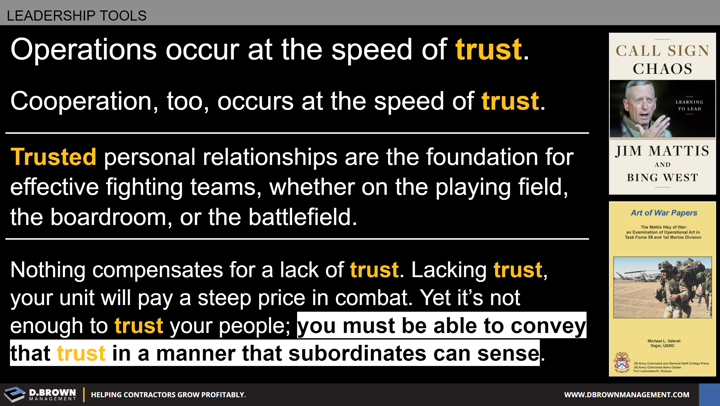Retired General Jim Mattis uses the word trust 65+ times in his autobiography Call Sign Chaos: Learning to Lead.
General Mattis ties trust together with building speed into operations to provide an advantage. This was cited multiple times by Michael Valenti, Major in the US Marine Corps, in a study he did on General Mattis's leadership style and the results: The Mattis Way of War: An Examination of Operational Art in Task Force 58 and 1st Marine Division
Construction projects are often chaotic and require a high degree of trust between parties from the initial business development following through to the design and construction phases. Contractors that focus on building trust at all levels move quicker and more profitably than their peers. This is especially true in uncertain conditions like COVID-19 and the likely post-COVID recession.
Patrick Lencioni defines trust as the foundation of effective teams delivering results.
- Trust in Each Other
- Constructive Conflict
- True Commitment
- Holding Each Other Accountable
- Focus on Results
Brené Brown has studied trust deeply and digs into what trust really is, including how to build and maintain it: The Anatomy of Trust. She uses the acronym BRAVING to break trust down into individual components.
- Boundaries
- Reliability
- Accountability
- Vault
- Integrity
- Non-Judgment
- Generosity
Additional Book Resources
- The Thin Book of Trust: An Essential Primer for Building Trust at Work
- Dare to Lead: Brave Work. Tough Conversations. Whole Hearts.
- The Speed of Trust: The One Thing that Changes Everything
- The Five Dysfunctions of a Team: A Leadership Fable

